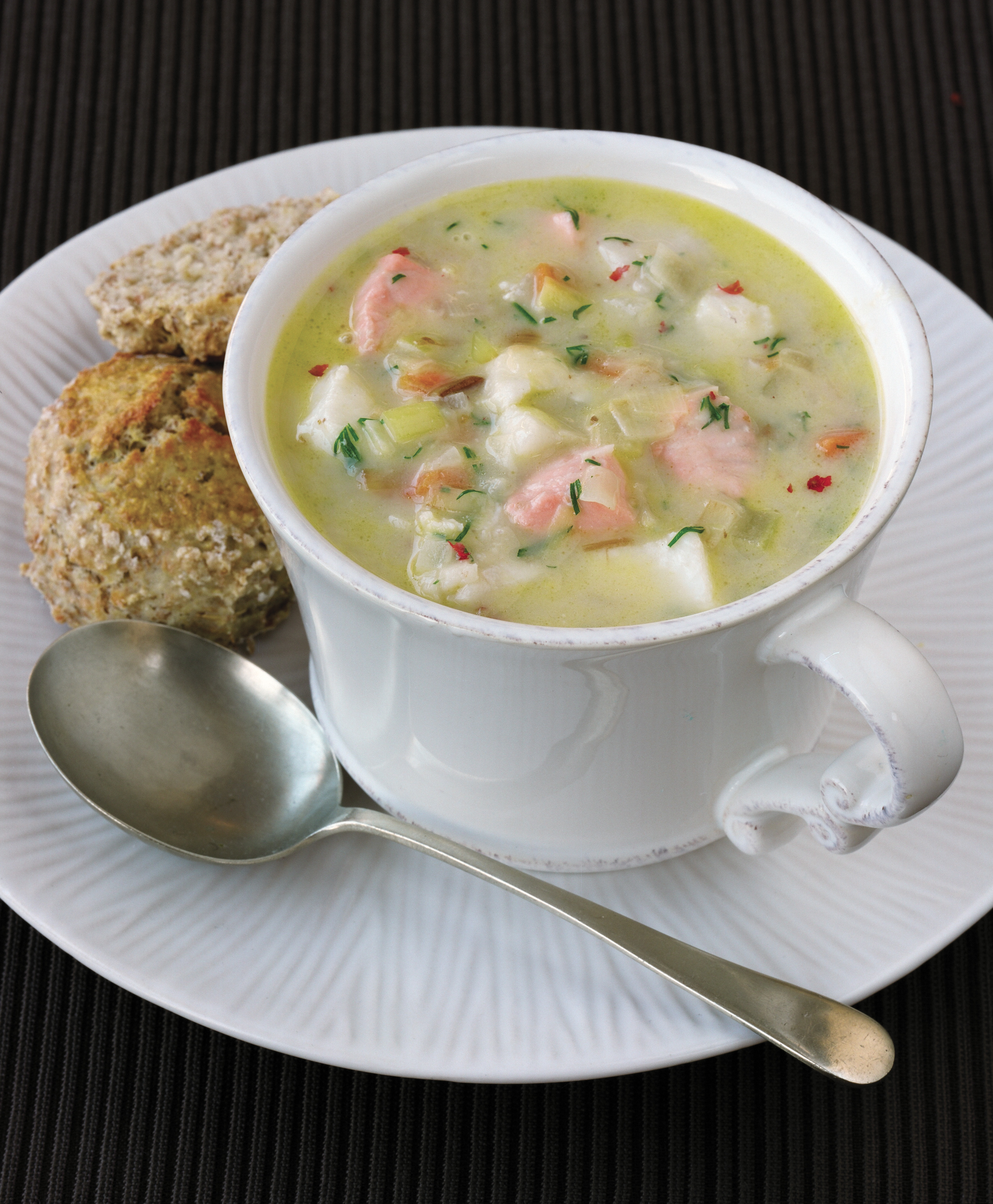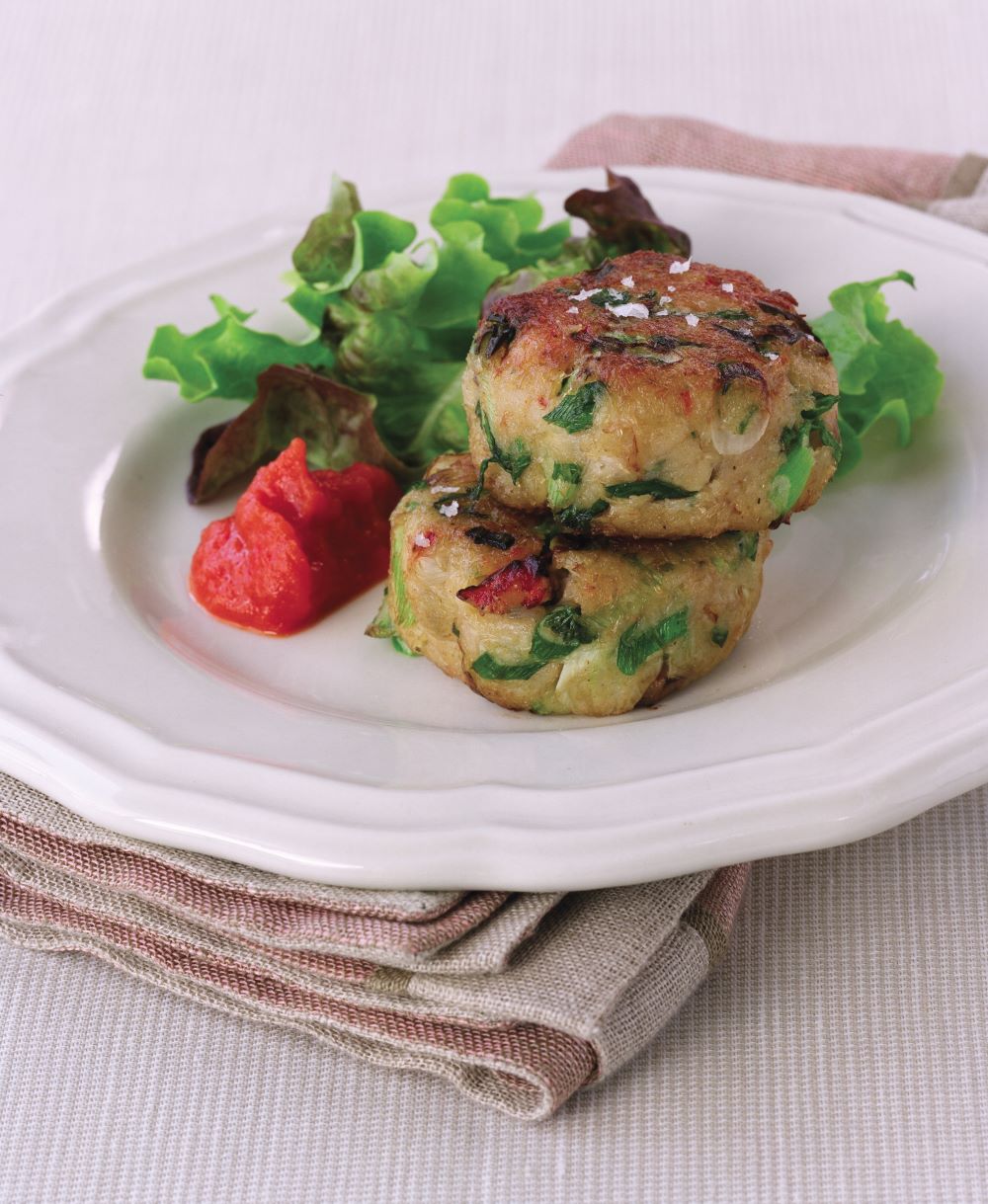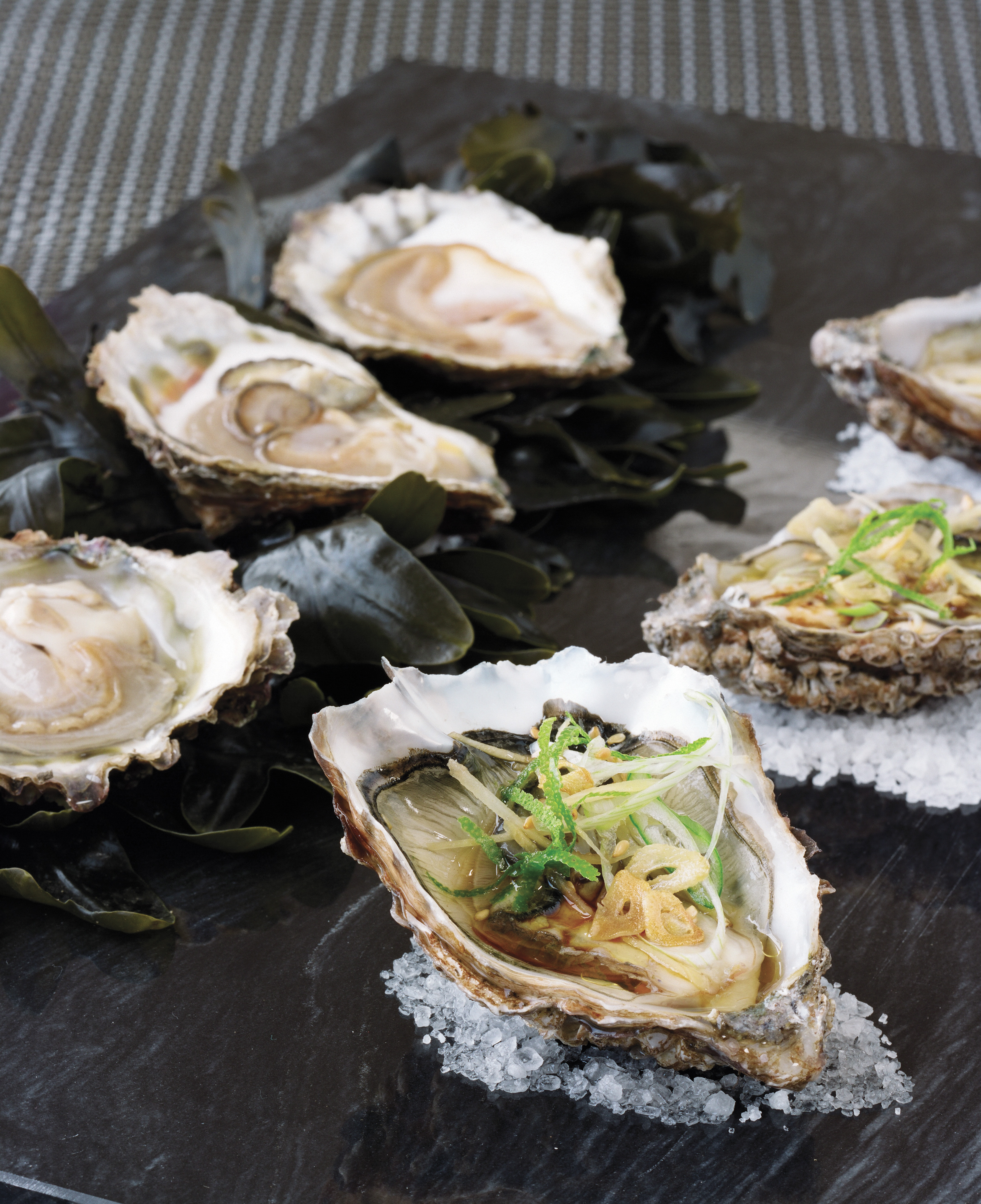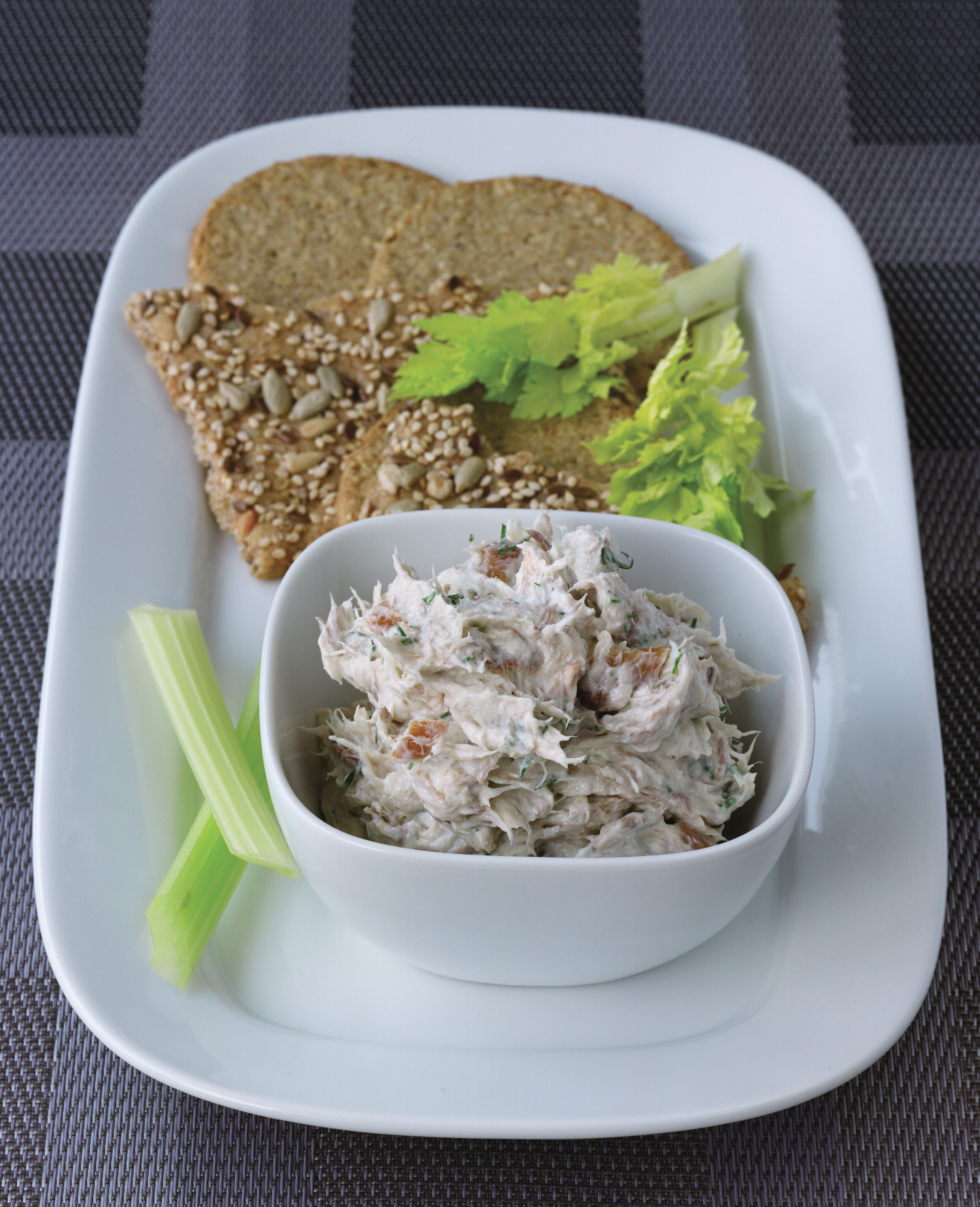Cookery Feature - Seafood for Festive Occasions
The perfect antidote to the traditional festive foods and too much chocolate, fish and seafood brings contrasting flavours and – even when we’re talking comfort food - a special sea-fresh lightness to the festive table that is very welcome. The wonderful chowder given below could well become your new culinary best friend, for any time of year, while the other recipes make great starters or light meals – and the classic prawn cocktail is the perfect special occasion starter, just right with a glass of bubbly… All are from my own cookbook ‘From Tide To Table, Everything You Ever Wanted to Know About Seafood’, with photography by Paul Sherwood.
 Greencastle Chowder
Greencastle Chowder
What could be more welcome after a bracing Christmas or New Year walk than a lovely steaming bowl of seafood chowder? There are as many chowder recipes as there are days in the year, but this one has an impeccable pedigree. It’s from Tricia Kealy’s famous little Kealy’s Seafood Bar in Greencastle, Co Donegal and it’s been the most popular dish on their menu ‘for ever’- Tricia doesn’t like to think how many gallons of this delicious chowder they’ve made over the years! It was originally introduced by her late husband, James Kealy, and his ‘wee scones’ (see recipe below) still make the perfect accompaniment today. Using a good stock is the secret of all soup making so a recipe for fresh fish stock is given below, but fresh or frozen stock can also be purchased from fishmongers, speciality food shops and some good supermarkets.
Serves 4-6
1.2 litres/2 pints fish stock (see note above)
100g/4oz skinless salmon fillet, cubed
100g/4oz skinless haddock fillet, cubed
50g/2oz butter
1 onion, chopped
2 carrots, chopped
1 leek, chopped
3 celery sticks, chopped
1 tsp chopped fresh dill
1 tsp crushed pink peppercorns
50g/2oz plain flour
salt and freshly ground black pepper
Angostura bitters
a little milk (optional)
pouring cream and chopped fresh parsley, to garnish
To Serve: freshly baked baby brown scones (see recipe below)
Bring the fish stock to a gentle simmer in a large pan and add the salmon and haddock. Cook for a couple of minutes until tender, then transfer to a plate with a slotted spoon. Set aside until needed.
Melt the butter in a separate large pan over a medium heat. Sweat the onion, carrots, leek and celery for about 10 minutes or until they are softened but not coloured. Add the dill and pink peppercorns and cook for a further 5 minutes.
Stir the flour into the vegetable mixture and cook for 5 minutes, stirring constantly. Gradually pour in the fish stock, stirring until smooth after each addition: add a dash of Angostura bitters, then bring to the boil and simmer for 15 minutes until all of the vegetables are completely tender and the liquid is slightly reduced. Season to taste.
Just before serving, a little milk can be added to thin out to the desired consistency. Add the cooked salmon and haddock to the chowder and allow to warm through. Ladle into warmed bowls and garnish with a little cream and some parsley. Arrange on plates with some brown baby scones to serve.
Fish Stock
Lemon sole, brill and plaice bones make a wonderful, almost sweet fish stock. It is fine to include heads and bones and skin of most types of fish, but avoid salmon, red mullet and oil-rich fish. When the stock is made, you can reduce it further and then freeze it in ice cube trays (freezing it this way means you can defrost as little or as much as you need at a time).
250g/9oz fish trimmings
3 leeks, chopped
1 bulb fennel, chopped
3 carrots, chopped
large handful fresh parsley, roughly chopped
175ml/6fl oz dry white wine
Makes about 1.2 litres/2 pints
Rinse the fish bones and trimmings of any blood, which would make the stock look cloudy and taste bitter. Place into a large heavy-bottomed stockpot with the leeks, fennel, carrots and parsley. Pour in the white wine, then add enough cold water to cover the fish and vegetables, (but no more than 1.2 litres/2 pints). Place on a high heat and bring to a simmer. After 5 minutes, remove the scum that forms on the surface with a spoon and discard. Reduce the heat and simmer, covered, for about 25 minutes, skimming as necessary. At the end of cooking time, remove the stock from the heat and strain, discarding the fish trimmings and the vegetables. Cool and store in the fridge for up to 3 days or freeze.
James’s Wee Brown Scones
Although seafood takes centre stage at Kealy’s Seafood Bar, the baking is exceptional too. These scones are unusually light and often enhanced by a scattering of cheese on top - hard to resist. As they are virtually fat-free they are best eaten warm from the oven, or at least on the day of baking, but they can also be frozen for warming up whenever they’re needed over the holiday period and would be very handy to serve with any of the seafood dishes given below.
Makes 12-14
1lb/450g plain flour plus extra for dusting
1lb/450g wheaten flour
1 tsp bread soda
1 tsp salt
725ml/11/3 pints approx buttermilk (or use a mixture of soured cream and milk)
1-2 tbsp treacle, slightly warmed and mixed with the buttermilk
sunflower oil, for greasing
egg wash - 2 egg yolks mixed with 2 tbsp water (optional)
50g/2oz Cheddar cheese, finely grated
Preheat the oven to 240ºC/465ºF/Gas 9.
Sift the plain flour, soda and salt into a bowl, add the wheaten flour and mix well. Make a well in the centre, pour in most of the buttermilk and treacle mixture, then mix well with a wooden spoon, adding remaining liquid as needed to make a soft, moist dough. Be careful not to over mix.
Dust the worktop with flour, turn out the dough, dust the top with flour and press out evenly to a thickness of 4cm/1½ inches. Cut or stamp out individual scones with a 5cm/2 inch fluted cutter, place on an oiled and floured baking sheet and brush the tops with the egg wash and/or scatter with the grated cheese. Bake for about 12 minutes, until well risen and golden-brown.
 Crab Cakes with Coriander and Chilli
Crab Cakes with Coriander and Chilli
These crab cakes are really delicious and very easy to prepare for a quick light meal. Crab meat is best sourced from a good fishmonger, if possible - or, if you have access to fresh crabs in season, you can of course cook them yourself. Either way, try to use white meat that is in large-ish chunks rather than lots of little pieces. For a more traditional flavour, you can omit the chilli and use parsley instead of coriander.
SERVES 4
225g/8oz white crab meat, thawed if frozen
50g/2oz scallions, trimmed and finely chopped
50g/2oz mayonnaise
75g/3oz fresh /frozen white breadcrumbs
1 small egg, lightly beaten
1 tbsp chopped fresh coriander
1 small red chilli, seeded and finely chopped
2 tbsp sunflower oil
salt and freshly ground black pepper
To serve: lightly dressed green salad and red pepper and chilli relish (recipe below)
Place the crab meat in a bowl with the scallions, mayonnaise, breadcrumbs, egg, coriander and chilli. Season to taste and mix gently until well combined. Divide the mixture into eight and then shape into crab cakes.
Heat the oil in a heavy-based frying pan. Add the crab cakes and cook for 3-4 minutes on each side until heated through and golden brown. Arrange the crab cakes on plates with some lightly dressed green salad and a good dollop of the red pepper and chilli relish to serve.
Red Pepper & Chilli Relish
The natural sweetness of the red onion gives this versatile relish a wonderful mellow flavour. It’s great with barbecued fish, crab cakes, or salmon burgers, and it will keep in the fridge for up to a week.
2 tbsp olive oil
1 red pepper, halved seeded and chopped
2 red onions, chopped
3 red chillies (or to taste), seeded
2 tsp sugar
2 tomatoes, skinned and chopped
Makes about 300ml/1/2 pint
Heat the olive oil in a heavy-based pan. Add the red pepper, red onions and chillies and cook over a low heat for 30 minutes until the vegetables are completely tender but not coloured, stirring regularly.
Sprinkle the sugar over the vegetable mixture and add the tomatoes, then simmer for another 10 minutes until slightly reduced and thickened. Leave to cool and then blend in a food processor or with a hand-blender, to make a thick purée. Season to taste and place in a sterilised jar. Store in the fridge and use as required.
 Galway Bay Oysters Sashimi-Style
Galway Bay Oysters Sashimi-Style
This recipe from Kevin Dundon of Dunbrody Country House Hotel & Cookery School, Co Wexford is a great way to introduce oysters to your guests when entertaining. Opening oysters is not too difficult (see below) and an oyster knife is a good investment if you would like to serve oysters regularly. Oysters are mainly seen as a winter treat because the Native flat oysters (Ostrea edulis) - which are especially associated with the West coast, notably Co Galway - are only in season when there’s an ‘r’ in the month, from September to April. But the Irish Rock Oysters (Crassostrea gigas) used here, also known as Pacific or Portuguese oysters, are available throughout the year from fish shops and supermarkets. They’re more accessibly priced and well suited to cooking or serving warm. (Oysters are also online, from producers, which is ideal for gifting. For further information on oysters, including a list of producers with map, see the Bord Bia website)
Serves 4
12 Pacific/Gigas oysters
1 tbsp sesame seeds
about 225g/8oz coarse rock salt
6 tbsp dark soy sauce
finely grated rind and juice of 1 lime
1 tbsp shredded root ginger
1 spring onion, finely shredded
4 tbsp sesame oil
2 garlic cloves, thinly sliced
Scrub the oyster shells then place one, wrapped in a clean tea towel on a firm surface with the flattest shell uppermost and the hinge pointing towards you. Gripping the oyster firmly, insert an oyster knife (or other short, strong knife) into the gap in the hinge and twist to snap the shells apart.
Slide the blade of the knife along the inside of the upper shell to sever the muscle that keeps the shells together. Lift the lid off the top shell, being careful not to spill any of the juices. Carefully clean away any bits of broken shell and finally run the knife under the oyster to loosen it from the shell. Repeat until all the oysters are opened, then arrange on a tray and place in the fridge until you are ready to serve.
Heat a frying pan over a medium to low heat and add the sesame seeds. Cook for 3-4 minutes, stirring regularly until they are lightly toasted. Tip out of the pan onto a plate and set aside until needed.
To serve, arrange three oysters on a bed of rock salt on each serving plate. In a bowl, mix together the soy sauce with the lime rind and juice, then spoon over the oysters. Scatter the ginger, spring onions and reserved toasted sesame seeds on top. Leave to stand for 5 minutes to allow the flavours to develop. Meanwhile, heat the sesame oil in the frying pan and sauté the garlic until it is golden and the sesame oil is nearly smoking. Drizzle over the oysters and serve immediately.
VARIATION
It is best to serve native oysters in the classic way: Put crushed ice on to the plates and then, if possible, small mounds of seaweed as it sets the oysters off so well. Arrange the opened oysters on top and have lemon wedges on hand. It is worth noting that about 15 minutes on ice is enough to chill the oyster without overdoing it.
.jpg) Classic Prawn Cocktail
Classic Prawn Cocktail
Prawn cocktail has enjoyed a big comeback in recent years and it’s not hard to see why the ‘70s favourite is popular again. Made properly with fresh ingredients, it can make an elegant yet simple (and very more-ish) starter - and it also makes an excellent sandwich filling. Although there are many versions, and shrimps are often used, Dublin Bay prawns (Nephrops Norvegicus, or langoustine) are the ultimate luxury ingredient.
Serves 4
20 large cooked peeled Dublin Bay prawns
FOR THE COCKTAIL SAUCE
6 tbsp mayonnaise (homemade, or best quality commercial eg Ballymaloe)
3 tbsp tomato ketchup
1 tbsp brandy
dash of Tabasco sauce
25g/1oz wild rocket (optional)
1 Little Gem lettuce, trimmed and finely shredded
salt and freshly ground black pepper
To make the cocktail sauce, whisk together the mayonnaise, ketchup, brandy and Tabasco sauce in a bowl. Season to taste.
To serve, lightly mix together the shredded lettuce and rocket (if using), then divide among serving glasses. Arrange the prawns on top and then drizzle over the cocktail sauce.
VARIATION
This cocktail sauce can be used with many other types of seafood such as lobster, white crab meat, poached salmon or trout.
 Smoked Mackerel Paté
Smoked Mackerel Paté
This paté is great as a starter, or for serving on canapés when entertaining. It also is a quick and easy snack served on hot toast.
Serves 4
450g/1lb smoked mackerel fillets
75g/3oz cream cheese
75g/3oz crème fraîche
1-2 tbsp creamed horseradish
dash of Tabasco sauce
juice of 1/2 lemon
salt and freshly ground black pepper
To Serve: selection of crackers and celery sticks
Remove the skin from the mackerel fillets and discard any bones, then break up the flesh into a bowl. Add the cream cheese, crème fraîche, one tablespoon of the horseradish, the Tabasco and lemon juice. Mix thoroughly until well combined, then taste and add the remaining horseradish, if liked. Season to taste and transfer to a serving bowl.
Set the bowl of smoked mackerel paté on a platter and add a selection of crackers and celery sticks to serve.
VARIATION
Use smoked trout or hot smoked salmon instead of smoked mackerel.
*This feature was recently published by the Irish Examiner
https://www.irishexaminer.com/





There are currently no comments
Leave a comment
Not a member? Register for your free membership now!
Or leave a comment by logging in with: